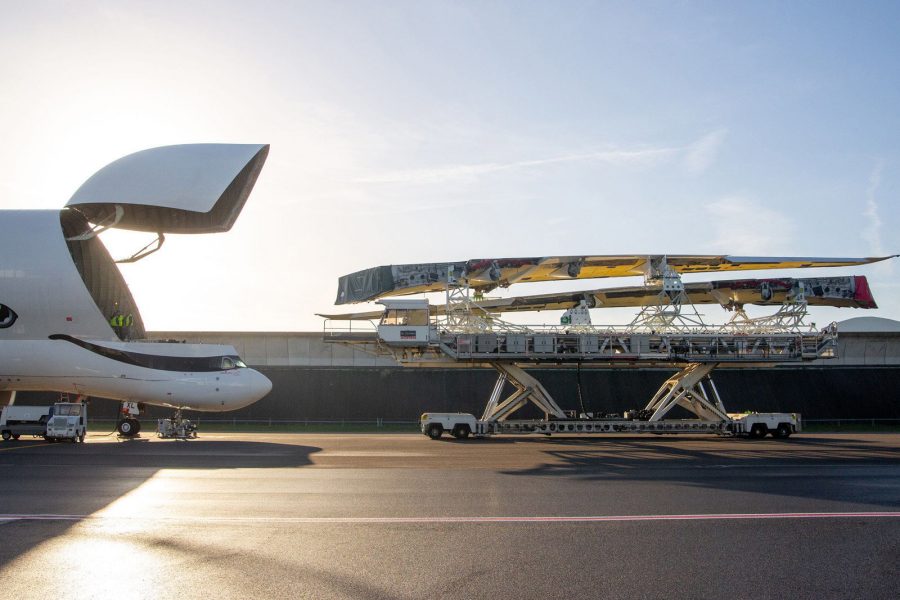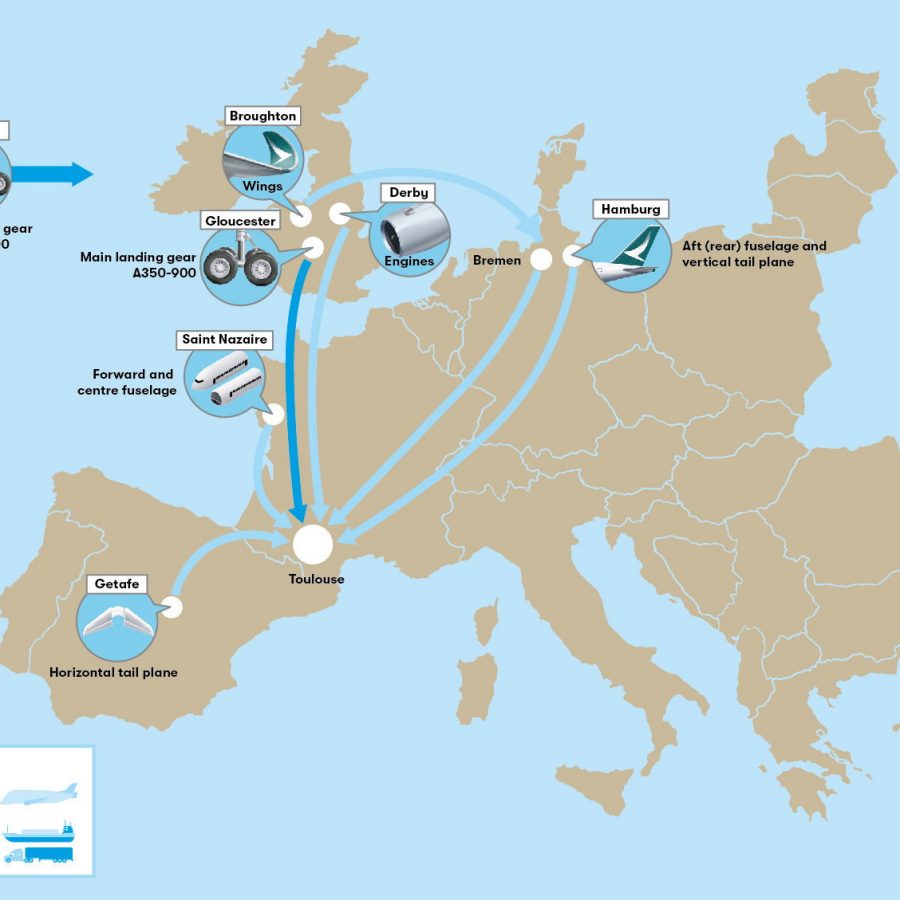A plane of many parts: tracing the global supply chain of an A350

The Airbus A350 has helped to transform Cathay Pacific. Its size and fuel economy have enabled the airline to open up new routes that would not have been viable previously, while the cabin interiors have set new standards for passenger comfort.
Its manufacture is newsworthy, too. Assembled at the Airbus factory in Toulouse, France, the FAL (final assembly line) receives part-assembled components from across Europe and the world. While all aircraft are planes of many parts and the idea of an international supply chain feeding production is very much the norm, this is something that truly is part of the Airbus DNA.
Set up 50 years ago, the cooperative vision of Airbus was to unite the aerospace industries in France, Germany, Spain and the UK to take on the bigger might of Boeing in the US. A document signed in 1967 unveiled a vision of an ‘Airbus’ for Europe. The A300, a twin-engine, widebody, long-haul aircraft, eventually took to the skies in 1972. In many ways, it is the predecessor of today’s A350.
The A300 remains part of the A350 story. The manufacturing relies on its fleet of bulbous Beluga aircraft, a specially adapted and bizarre-looking A300 that has been converted to carry some of the major aircraft components from across Europe to the FAL to keep the supply chain intact and production running.

The Beluga XL
The Beluga has been a faithful servant, but it is being replaced by a new, improved and bigger version based on the longer and wider Airbus A330. The first Beluga XL joined the fleet this summer and has a distinctive face of a whale. It is able to transport two wings at once, while the smaller Beluga could only transport one.
Using the original Beluga with its smaller capacity, it was taking 45 hours of flying time to get all the major components and fuselage sections to the FAL. The fleet was purposefully limited to five aircraft, which makes certification and licensing easier as it counts as a fleet of ‘test’ rather than production aircraft. But with increased aircraft production rates on the A350 line of up to 30 aircraft a month, something with more capacity was required.
Because the new Beluga XL is based on a more modern airliner, it eliminates the need to have a third crew member (it doesn’t need a flight engineer, just two crew). As before, the cargo door opens above the cockpit so large pieces can be front-loaded into what really is an extraordinary aircraft.
Hero image: The Beluga XL. ©Airbus 2019. Photo by JB. ACCARIEZ / master films
- China – the Chinese Mainland, Hong Kong SAR, Macao SAR and Taiwan Region
- Hong Kong SAR - English
- Chinese Mainland (China) - English
- Taiwan, China - English
- 香港特別行政區 - 繁體中文
- 中国內地 - 简体中文
- 中國台灣 - 繁體中文
- Africa
- South Africa - English
- Asia
- Bangladesh - English
- Korea - English
- Singapore - English
- Cambodia - English
- 한국 - 한국어
- Sri Lanka - English
- India - English
- Malaysia - English
- Thailand - English
- Indonesia - English
- Maldives - English
- ประเทศไทย - ภาษาไทย
- Indonesia - Bahasa Indonesia
- Myanmar - English
- Vietnam - English
- Japan - English
- Nepal - English
- Việt Nam - tiếng Việt
- 日本 - 日本語
- Philippines - English
- Australasia
- Australia - English
- New Zealand - English








